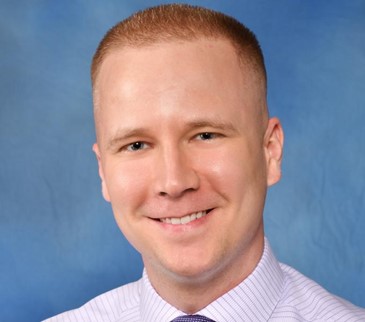This blog is part three of a six-part series on the art of preceptorship. Learn more about becoming a preceptor.
Where do you work and precept?
My current titles include Director of Osteopathic Education at the UPMC Shadyside Family Medicine Residency Program and Clinical Assistant Professor at the Philadelphia College of Osteopathic Medicine and the University of Pittsburgh School of Medicine. I work with our residents and medical students seeing patients in four settings: outpatient at our family health center, inpatient at UPMC Shadyside, at a local nursing home, and through home visits. I also collaborate with our learners in the domains of substance use recovery, quality improvement, medical decision making, health equity, and social drivers of health.
Can you share your journey to becoming a preceptor?
I attended the West Virginia School of Osteopathic Medicine and extended my medical school training by a year to serve as a graduate teaching assistant in osteopathic principles and practice. This extra year at WVSOM remains one of the very best in my medical career. I found myself learning so much through teaching. Enthusiasm in this supportive learning environment was contagious. I was really excited to see learners develop a new skill, then imagine them taking this skill out into the world to care for patients. I was blessed with some incredible mentors and preceptors during this year, and later in my third- and fourth-year clinical rotations. I was already thinking about paying that love forward to the next generation of learners as a future preceptor.
I chose UPMC Shadyside for my family medicine residency training for many reasons, including my future ambitions in academic medicine. Our residents work with medical students during each year of their training and learn how to collaborate within a team of learners of all levels, stay efficient in an office session with a medical student learner, and give and receive feedback effectively. My residency training further strengthened my interests in academic medicine to the point that I went on to complete a faculty development fellowship at UPMC St. Margaret while becoming a full-time faculty member with our residency program as well.
What aspect of being a preceptor do you find the most rewarding?
The most rewarding aspect of my role as a preceptor is knowing that our work translates to more patients receiving quality care in the future. This feeling is rooted in my core belief that everyone in this world deserves a tremendous primary care provider (read: advocate, friend, partner). As a preceptor and medical educator, I aspire to model this role, train others to serve in this role, and work to change the primary care paradigm so others can excel in this role.
What’s your approach to giving constructive feedback? How do you ensure that students feel encouraged rather than discouraged?
I provide feedback using the ARCH Model. It is a powerful framework that calls learners to reflect. It celebrates the things they have done well, further encouraging them to keep doing these wonderful things. This model also lets the learner identify something that they would like to work on going forward and creates space for us to help them with next steps. When utilized correctly, the ARCH Model drives feedback as a cultural element of your learning environment.
To reduce the power differential between preceptor and learner, quite often I will share reflection on my growth over the rotation through the ARCH model first. After all, we are in a constant state of improvement as preceptors, and I want my learners to know that sometimes I struggle too. I also want to hear which elements of my precepting they found most helpful, so I can continue to provide that support to other learners in the future. Working through ARCH helps me challenge myself to see another opportunity for growth in my precepting and commit to a clear next step towards it.
How do you help students reflect on their own learning and progress throughout a rotation?
This starts at the beginning of the learning experience in sharing expectations with one another and setting goals for our time together. From there, periodic check-ins on the goals can be helpful, including some experiences where we may need to change course in our precepting relationship entirely. Summative feedback within the ARCH model as detailed above calls in further reflection and ties it all together nicely.






